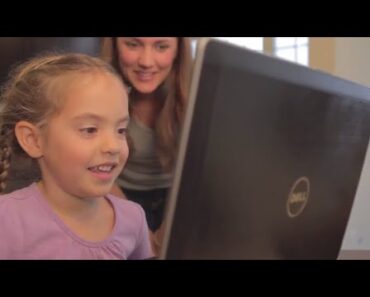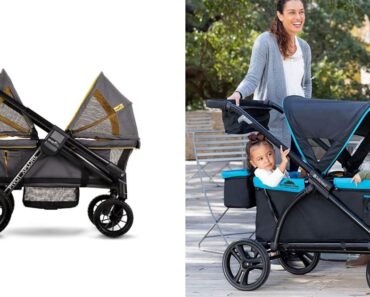Storing breast milk safely is complicated but oh-so important. Here’s everything you need to know, from how long it can stay out, how to freeze it and how to thaw and serve it to your baby.
There’s no reason to cry over spilled milk, but there are plenty of reasons to cry over breast milk that wasn’t stored properly. Not only did you work hard to pump that liquid gold but sour milk can also make your baby sick. Here are the basic breast milk storage guidelines that all parents should keep in mind.
How long can breast milk sit out at room temperature?
The rule of thumb is that untouched, freshly-pumped breast milk can stay out at room temperature for four hours or less, says Deborah Campbell, a neonatologist at The Children’s Hospital at Montefiore in the Bronx, N.Y. If it’s been longer than four hours, you need to throw it out (sorry!). If you know you’re not going to use the milk during that timeframe and your baby hasn’t sipped from it yet, just stick it in the fridge.
How long does breast milk last in the fridge?
According to the American Academy of Pediatrics’ breast milk storage guidelines, once you’ve put breast milk in the refrigerator, it can stay there for up to four days. It’s during this window the milk’s fat, digestive enzyme activity and anti-infection benefits are at their peak, adds Campbell. To keep the milk cold, be sure to store it on the bottom shelf at the back of the fridge, not in the door.
How long will breast milk keep in an insulated cooler?
If you are hitting the road and need to bring along a bottle or bag of breast milk, you can pack it in an insulated cooler with an ice pack and it should be safe for up to 24 hours.
How long does breast milk last in the freezer?
If you don’t plan on using the milk within the four days that it’s at its best in the fridge, you should freeze it within 24 hours of pumping. Breast milk is good for three to six months when stored in a freezer attached to a refrigerator. As with storing it in the fridge, the milk should be kept in the back of the freezer. If you have a deep freezer or chest freezer, you can freeze the milk for up to one year.
How to store breast milk
Breast milk storage bags are your best option. Choose two- or four-ounce storage bags and, if you plan on freezing the milk, be sure to leave a little room at the top of the bag because the milk will expand when it freezes.
Write the date you pumped on the bag so you’ll know when to throw it out. Don’t use disposable bottle liners or other types of plastic bags. If you’re afraid that the bags may tear, you can put them inside a plastic container with a lid. You should avoid any containers made with bisphenol A or S, but you can freeze breast milk in freezer-safe glass or BPA-free plastic containers. Wash all bottles with hot, soapy water beforehand (or in the dishwasher) and dry them well. Do not use chemical disinfectants.
How to thaw breast milk safely
Remember the mantra: First in, first out. Thaw the oldest breast milk first.
There are several ways to safely thaw your breast milk:
-Place it in the fridge overnight to thaw.
-Run the bottle under lukewarm water.
-Set the bottle in a container of warm or lukewarm water.
-Use a waterless bottle warmer.
If you thaw the breast milk in the fridge, use it within 24 hours, counting from when it’s completely thawed. Once milk is brought to room temperature, use it within two hours.
Whatever you do, do not thaw your breast milk in a microwave oven because it can thaw the milk unevenly and potentially burn your baby!
It’s also important to never refreeze breast milk after it’s been thawed.
Why does thawed breast milk smell and look different than fresh breast milk?
That’s normal. This happens when women produce breast milk that is high in an enzyme called lipase. While this enzyme helps digest the fat content in breast milk, it can also affect the smell and taste of both fresh and frozen milk (it usually makes it smell and taste metallic or soapy). Women often don’t realize that their breast milk is high in lipase until they freeze it because the changes to the milk take a few hours—or even a day—to take effect, so you probably wouldn’t notice the changes with fresh milk. If you’re concerned about your baby not wanting to drink the breast milk, talk to your doctor to find out about a process to help neutralize the enzyme and lessen the smell.
How do I know if my breast milk has gone bad?
Generally speaking, you’ll know that your breast milk has gone bad if it smells rancid or sour. You probably notice that your breast milk will separate naturally after you pump, with the fat rising to the top. “When milk is still good, it mixes back together easily with a gentle swirl of the bottle,” says Campbell. If your milk doesn’t do this or has chunks floating in it, throw out the milk, adds Campbell.
How do I warm a bottle of breast milk safely?
Warming breast milk that has already been thawed is best done in lukewarm water (usually 40°C/104°F) for about 20 minutes. Breast milk does not need to be warmed: Some babies prefer their milk cooler, while others like it fully warmed. As you get to know your baby’s preferences, you can adjust your warming times. As with thawing, never use a microwave oven to warm breast milk as it can heat the milk unevenly and scald your little one.
Be sure to test the milk’s temperature with a few drops on your wrist before feeding it to your baby.
Can I reheat a bottle of breast milk?
We all know how precious breast milk is, and the thought of wasting even a drop makes us cringe. But once a baby starts drinking a bottle of milk, some bacterial contamination occurs in the milk from the infant’s mouth, says Campbell. This means that you shouldn’t reheat the milk. A bottle that your baby has drank from is only good for about an hour, says Campbell. She recommends storing milk in smaller bottles so that your baby uses the full portion at each feeding and you don’t have to fret over throwing out your precious liquid gold.
About our expert: Deborah Campbell is a neonatologist at The Children’s Hospital at Montefiore in the Bronx, N.Y.

































